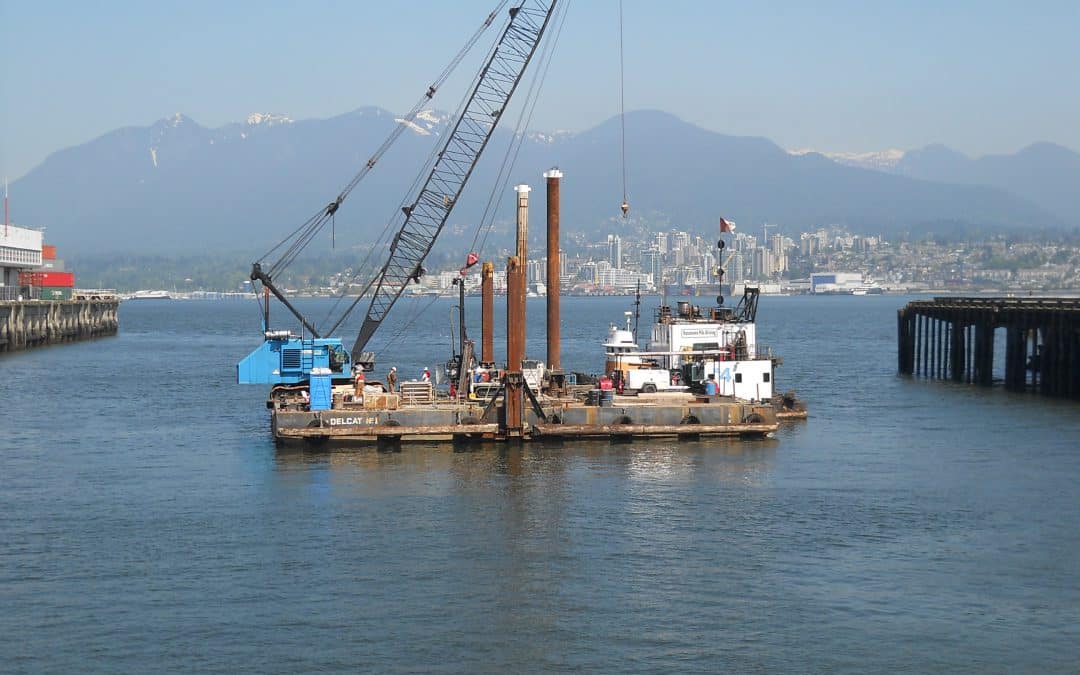Keystone Environmental completed the environmental investigations and approvals for this facility upgrade. The plan was to replace the nearly 100-year-old wharf facility with a new Panamax bulk commodity ship loading facility. We completed the Phase I and II Environmental Site Assessments, Human Health and Ecological Risk Assessment (HHERA), habitat assessment, remediation option assessment and selection, and secured approval from the BC Ministry of Environment as well as the Port of Vancouver.
The wharf foreshore area was filled in the early 1900s and the property and wharf were the home of industrial activity including pesticide manufacturing, copper, lead and zinc concentrate handling and loading, equipment servicing, and fish processing for over 100 years. The preliminary and detailed investigations included soil, groundwater, pore water, soil vapour, and sediment investigations. Contamination included light extractable petroleum hydrocarbons (LEPH), polycyclic aromatic hydrocarbons (PAH), metals including copper (ore concentrate), and pesticides in multiple media including sediment and bedrock, and commingled from several sources. A geophysical survey was conducted to determine bedrock surface configuration enabling dense non-aqueous phase liquid (DNAPL) migration pathways, and to optimize investigative locations. The harbour detailed site investigation included 88 sediment locations (ponar and vibracore sampling), barge-based sonic drilling with installation of 19 monitoring wells of which 17 were nested, and divers to obtain pore water samples. Upland areas were investigated via conventional and sonic drilling (over 100 groundwater monitoring wells and 12 soil vapour probes).
The HHERA developed risk-based standards for the site and water lots. The detailed risk assessment included a habitat assessment; biological inventories; mapping; soil, sediment, groundwater, soil vapour, pore water, surface water, and biological tissue sampling and analyses; acute and chronic toxicity testing; development of site-specific toxicity reference values; identified receptors and exposure characteristics and frequency; evaluation of exposure point concentrations and pathways; estimates of exposure; observations ecological effects; risk characterization; and reporting.
Remediation planning and design was guided by the HHERA. Areas requiring dredging and or capping were identified and approaches selected based on long-term plan for use of wharf, vessel size and orientation, and adjacent proposed water and land uses.
With a total budget over $2 million, Keystone Environmental completed the investigation, HHERA and remediation plan within 8 months to meet the client’s contractual obligations while facing numerous logistical constraints and challenges throughout the duration of the investigations. An Approval in Principle of the remediation plan was secured from the Ministry of Environment within the required schedule.

